The order sirenia has long been fascinating to me, the main herbivorous marine mammals that have survived throughout the Cenozoic. The one that interests me the most (even inspiring my ATB name Sirenia) is, unfortunately, no longer living, the Steller’s Sea Cow. These giant sirenians lived around Commander Island in the Bering sea, being hunted by locals.
Flying Peacock Spider (Diversity of Life on Earth: Peacock Spiders by Bandai)
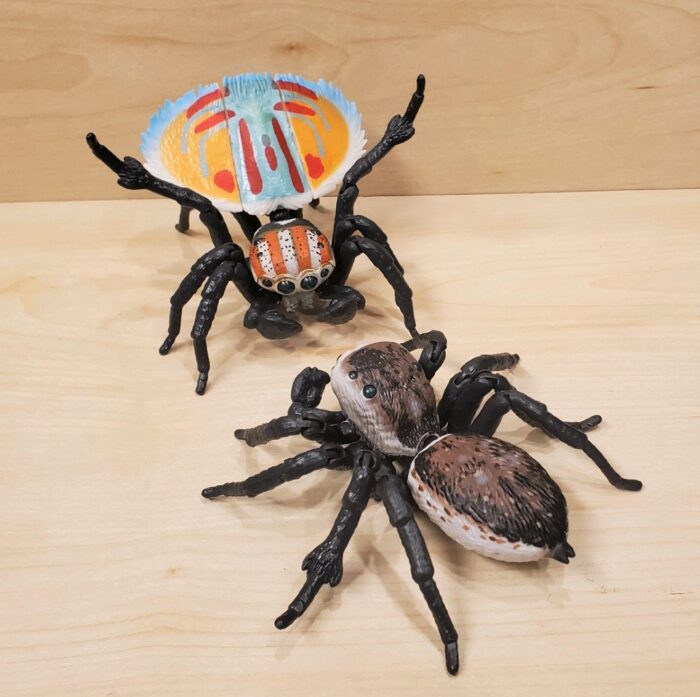
The genus Maratus, commonly referred to as peacock spiders, consists of over 80 species, all endemic to Australia. One must wonder how a single genus of spiders could speciate to this magnitude on a single geographic land mass (although there are some on Tasmania). The answer lies in their courtship rituals.
Collared Peccary (Wild Safari North American Wildlife by Safari Ltd.)
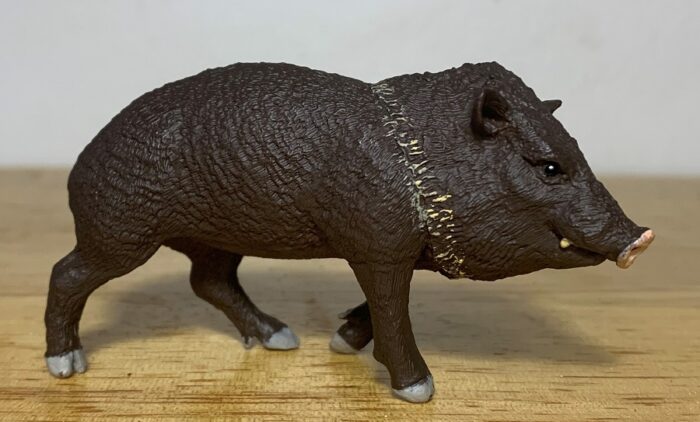
Although they look very much like pigs, and are sometimes called New World pigs, peccaries aka javelinas belong to their own distinct family, Tayassuidae. Pigs belong to the family Suidae and about 30 million years of evolution separates the two families that together make up the Suina clade. While all true pig species hail from the Old World, all extant peccary species come from the Americas, although the family originally evolved in Europe.
Giant Clam (Yowies Series 4 by Cadbury)

The genus Tridacna consists of large marine bivalves commonly known as giant clams. The largest, T. gigas, can be 120 cm across, weigh over 200 kg, and live for over 100 years. Today we will be looking at T. maxima, which is known as the maxima clam (although it also goes by the oxymoron ‘small giant clam’).
White Tiger (Wildlife Asia & Australia by Schleich)
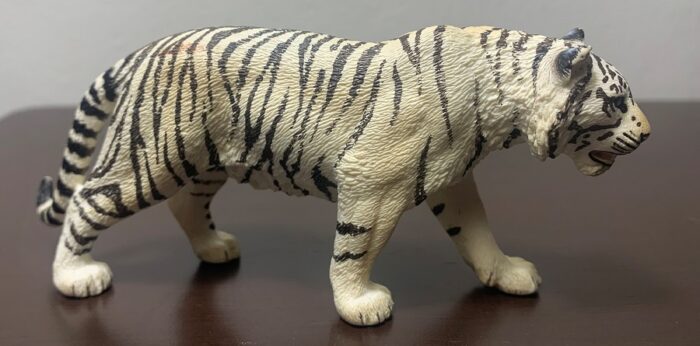
Contrary to popular belief, the white tiger is not its own unique species or sub-species of tiger. In fact, according to Luke Hunter’s Carnivores of the World, all captive white tigers are descended from one wild individual. That individual was a male cub captured in Madhya Pradesh, India, in 1951.
Rusty Patched Bumble Bee (Animals with Superpowers by Yowie Group)
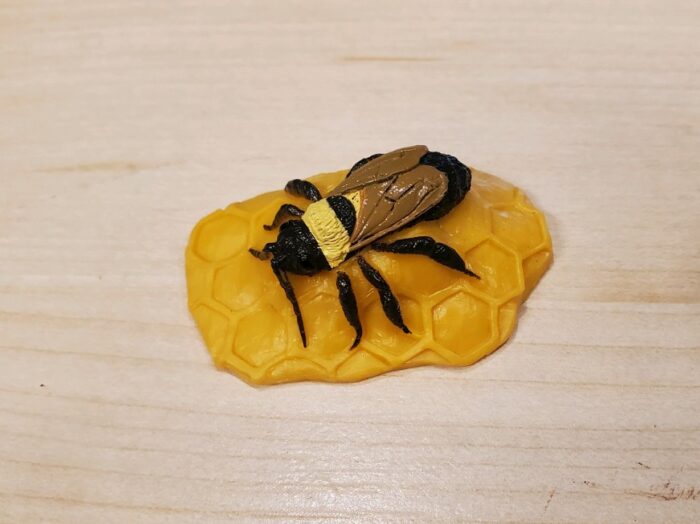
Bumble bees are not uncommon in the toy realm, usually as ‘generic bees’ in bin-style sets. Some have been made by major manufacturers, including Bullyland, CollectA, and Safari Ltd., but none of those are identified at the species level. To my knowledge, there are only two figures of bumble bees attributable to the species level, the golden northern bumble bee (Bombus fervidus) by Play Visions in 1996 and the rusty patched bumble bee (B.
Jaguar, pair (Noah’s Pals by Caboodle! Toys LLC)

In the forests of South America, is an incredible and capable killer. With a camouflaged pelt, acute senses and a powerful bite that allows it to crush turtle carapaces and mammal skulls, it is famed for power and features in many myths and legends of the region. This animal is the Jaguar (Panthera onca), and despite the problems from hunting for it’s pelt, it is still among us across South America, though in many areas it’s numbers are incredibly low, hence why, in the Noah’s Pals line, it is part of the “vulnerable” line, limited to 20,000 pairs.
Caribbean Monk Seal (Yowies Forgotten friends Series A by Cadbury)
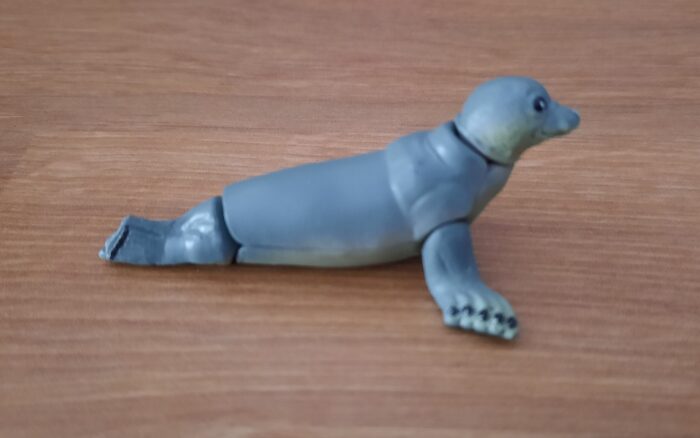
Human greed is a catastrophic thing for the world. It results in pollution and destruction of the environment, and the loss of many, many amazing creatures. One such example is the Caribbean Monk Seal, a docile creature that lived around the Caribbean islands. These animals were hunted by visitors to the island, often for their fur and oil.
Sloane’s Viperfish (MIU Deep Sea Odyssey 2 by Kaiyodo)

Review and images by JimoAi; edited by bmathison1972
The deep ocean is one of the most inhospitable habitats on this planet, and animals have to find extreme ways to adapt or die out. For one, sunlight only goes as low as 1000 m, although any significant light rarely goes to 200 m, which means that there are no plants to photosynthesize and in turn, no plants for herbivores to graze on.
Common Raven (Wings of the World by Safari Ltd.)
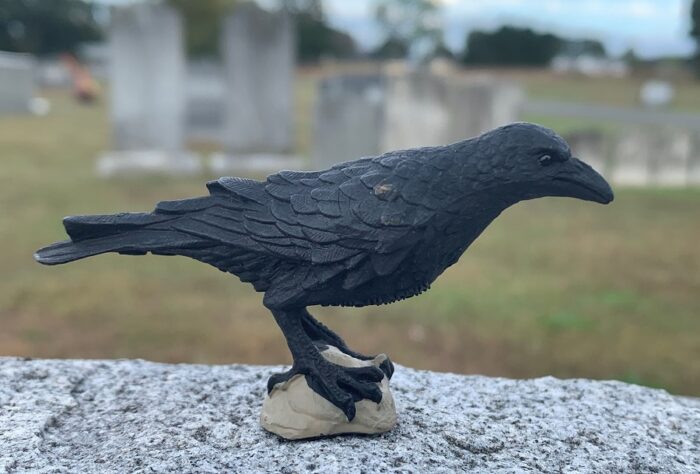
It’s Halloween and what better way to end our spooky season than by looking at one of its most symbolic animals, the common raven (Corvus corax). The common raven ranges around the northern hemisphere and lives in all the varied habitats therein. As a result, it also features in the varied mythologies, folklore, and religions from wherever it lives.
Black Widow (Fun World by Easter Unlimited, Inc.)

For my final Halloween post, I am reviewing a figure that was specifically sold as a Halloween novelty toy! I am referring to the black widow (Latrodectus mactans) by Fun World, which is a Division of Easter Unlimited, Inc., a novelty shop that sells seasonal and holiday-themed toys, décor, and costumes.
Black Cat, sitting (Schleich Farm by Schleich)
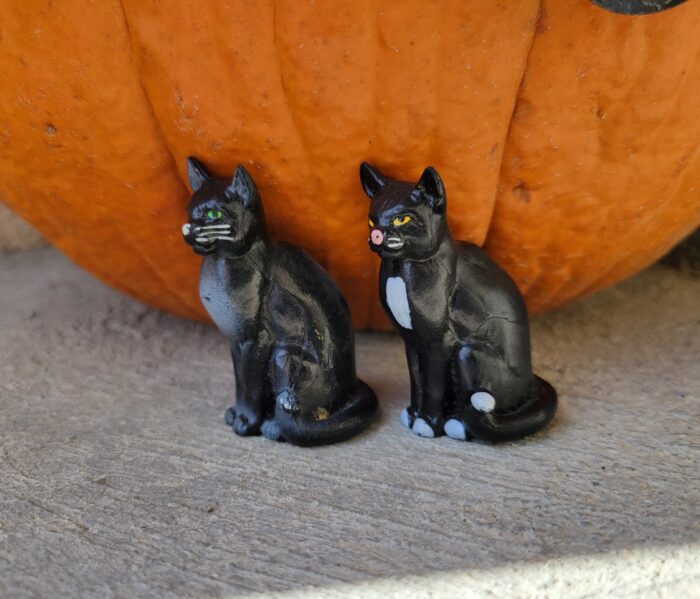
Review and images by Saarlooswolfhound; edited by bmathison1972
In keeping with the Halloween theme for the upcoming holiday, here is presented the Schleich #13004 sitting black cat (Felis catus). This model was released in 1984 in the early days of the company as part of the Schleich Farm series and was later discontinued in 1997.




